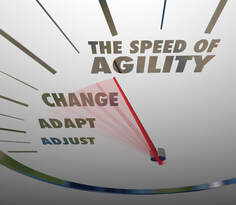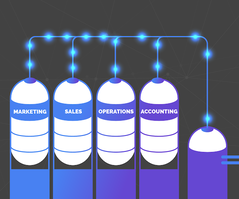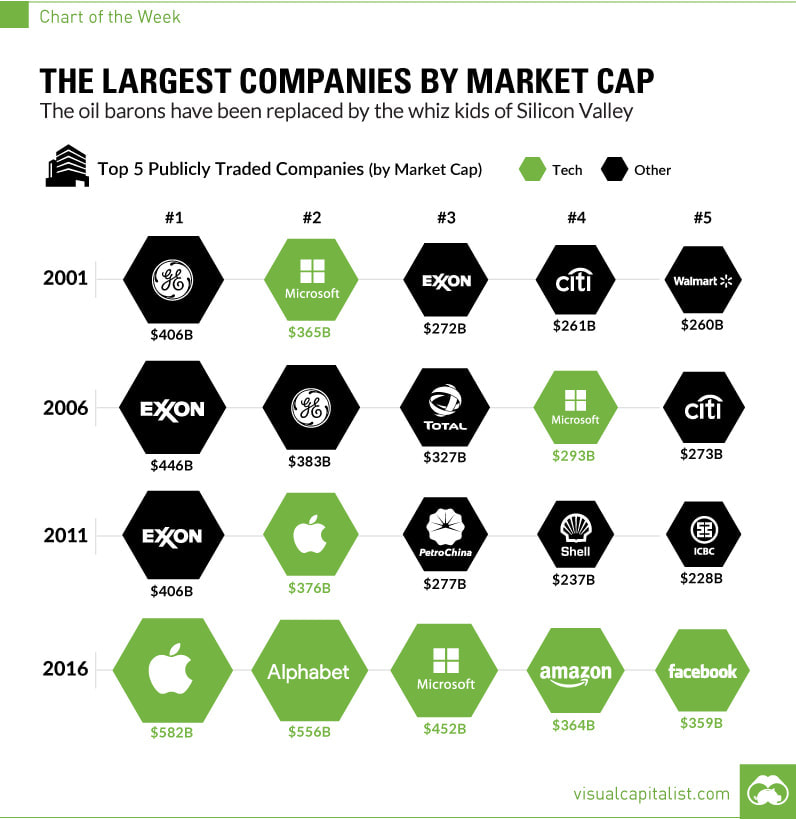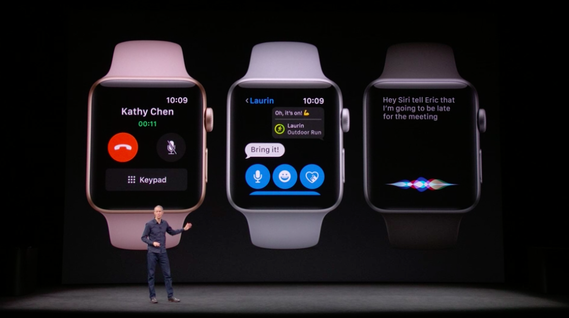|
Organizing the right teams is vital for a successful recovery from the crisis. While many companies may have "a plan" for the current crisis, the right details and optimal, timely actions are key to success. This video discusses the 4 teams that your company should assemble, the key actions the teams should execute, and the value created. Click to PLAY button on the video above. Once the video starts, you can click on the arrows in the bottom left corner to watch the video in full screen mode.
0 Comments
As part of the Leading Through The Crisis series for business leaders, this discussion is about LEADING CHANGE. Click on the video play button below to watch the presentation and informative discussion. After you click the video play button, you can select the arrow button in the bottom right corner to expand the video to full screen.
As part of the ongoing Leading During a Crisis series for business executives, today's discussion was on "Building Trust". Building trust is vital for every business leader. High-trust cultures outperform those with low-trust by 286% ! “Trust is a critical part of our culture. It is even more important now with everyone working remotely.” --- CEO of client company "High trust cultures pay a dividend. Low trust cultures pay a tax." --- Steven M.R. Covey Click the play button below to watch the video and see the valuable insight that was shared during this discussion. The novel coronavirus (COVID-19) crisis has exposed the business continuity plans and readiness state of many companies. While this crisis is concerning, history shows that the world has faced other wide-spread crisis situations, such as the Bubonic Plague, Spanish Flu, MERS, SARS, Swine Flu, and many others. Those examples are Pandemics, but the crisis could also be caused by nature disasters, terrorism, wide-scale technology failure, and other situations. History illustrates that these situations eventually pass, and it also shows that there will be other future crisis situations. How will your business handle the crisis to minimize the disruption and impact, and how well will your business be prepared for the next one? For years I've stressed the importance and helped clients prepare a comprehensive, actionable Business Continuity Plan that is properly tested and retested on an ongoing basis. We've also discussed "Digital Transformation" and how the right "Digital" capabilities can be very valuable during a crisis. Company's have different levels of business continuity capabilities and readiness that can be described in these groupings: The Good: Many business leaders have properly prepared their companies for dilemmas and crisis situations. Today I talked with a client company leader that I've advised throughout the years. They have a comprehensive, actionable Business Continuity Plan that is well supported by solid technology/"digital" capabilities. When the COVID-19 situation escalated, they simply executed their plans and leveraged their digital workplace capabilities. Employees are now working from home/remotely, and can utilize the same technologies and digital capabilities they use in the office. While the work environment has changed, their customers are still well-supported and operations have continued with minimal to no impact. I was very happy to see that the guidance, efforts and proper investments are really paying off. The Bad: Unfortunately there are companies that do NOT have a solid Business Continuity Plan, and as as result, they are scrambling to react and figure it out during a crisis setting, which causes chaos, customer service interruptions and a very significant operations impact. Too often, business leaders don't make Business Continuity Plans, Disaster Recovery Plans, and Digital Transformation a priority until they experience a major impact. Don't let your business be "THE BAD". Be proactive and take the proper actions to protect your business. Even in the midst of a crisis, a business continuity expert can help you quickly address the current gaps, issues and pressing needs, fast-track the process, and get your business operations back on track. The Ugly: And then there are companies that even after experiencing a crisis will still fail to take the appropriate actions. They will use excuses such as "we're really busy right now", "we have other priorities right now", "we're just hoping that it won't happen", and other cop outs that shouldn't be acceptable. Don't be "THE UGLY". As a business leader you must anticipate and prepare your company for potential threats/risks. Often the reason companies fail to start or don't complete the process is they don't have the right internal resources/expertise, or the process seems too daunting. This is a compelling business need where a seasoned expert can make all the difference. Engaging the right expert can help your company build the right plans, fast-track the implementation, quickly change your state of readiness, and protect your company's future.
Technology plays a key role in today's rapidly changing business environment. If it’s been a while since you’ve reviewed your company's Information Technology effectiveness, there’s never been a more crucial moment to get your company's IT up to speed. Businesses are currently in a Digital Transformation race that rewards the first movers and most agile, and leaves the others playing catch-up to survive. Technology can provide significant business advantages, but it can also pose serious risks. Whether it’s due to a breach from inadequate cybersecurity or missed opportunities from an obsolete solution, the results of misguided and/or ineffective information technology can be devastating. Furthermore, when your technological solutions are down or inaccessible, you not only risk lost profits, but lost customer confidence as well. Here are 10 indicators that it’s time for an independent review of your company's Information Technology ("IT"):  IT can’t keep up with the pace of your company. It’s great that your business is growing, but the celebration won’t last long if your technology can’t keep up. If you’re frequently hearing “no” from IT team when you have new requests, it’s time for a change. Today’s business requires agility, and your technology organization must be able to quickly adjust to changing demands and produce timely results for all your business demands.  Your IT costs continue to increase while confidence and satisfaction in IT service is decreasing within the company. A timely IT review will identify the underlying issues and set the course of actions to get your IT back on the right track.  Unknown risks: Have you been hacked or are your systems potentially compromised? If you’re not confident in your cybersecurity, you’re putting your company’s future at risk.  Your business is evaluating options to purchase new technology. If you’re considering a new system or a move to a cloud service, there are many factors, risks, and issues that must be taken into consideration.  Frequent and/or unexplainable outages and IT emergencies. Your business processes and operations are dependent on your systems, and nagging I.T. issues take time and energy away from core business functions. When your network and/or key systems are down, your business is down, and your customers are negatively impacted. If your customers regularly can’t access your services, they may turn to your competitor. Don't wait until your technology impacts your business.  Scattered vs. strategic: If a business lacks a comprehensive technology strategy, a well-defined roadmap, and effective governance, it will have disparate technology that is scattered across the organization. The result: spiraling technology costs, unnecessary complexity, and ineffective technology outcomes.  “Data silos” instead of comprehensive, unified, timely business insight: When this happens, the reports that executives see won’t paint an accurate, reliable picture. The right insight is vital for your business's success.  Reactive vs. proactive: Is your IT frequently in “fire-drill mode” and reacting to requests? Or are they proactively driving the business and providing a competitive advantage? You need a change catalyst to assess and transform your IT organization from a laggard to a leader for your company.  Do you have the right technology resources? Do you really need more IT employees, or do you need people with different skills, improved leadership, a better structure, and/or other improvements to your IT organization?  Planning for the future: Companies are in a Digital Transformation race. Do you have the right technology strategy, the right team and the optimal mix of internal and external resources? Is your business' technology on the right course for success? If you observe any of these signs, it's time for an Information Technology review. Xtrii performs comprehensive, cost-effective technology reviews that are conducted by proven technology experts that have helped some of the world's best companies achieve extraordinary success.
As illustrated in the charts below, the list of the world's largest companies by market cap has changed significantly in just the past two decades. Let's analyze the information to see what we can learned and leveraged for a more successful 2020 and beyond. In the following graph, it's interesting to note that only 1 of the top 5 from 2001 is still in the top 5. If you go back to 1955, the top 10 list includes General Motors, US Steel, Chrysler, Amoco, CBS, Goodyear, Firestone... and NONE of the these companies make even the top 20 list today. For 2019, let's expand the list to show the top 10, as of June 2019. Note, the order of the top 3 has frequently changed this year with their market cap values being so close in value. In just the past 3 years, the market values of Microsoft and Amazon have MORE THAN DOUBLED in value.... Wow!
We live in a rapidly changing world, and market-leaders fully leverage change, technology and new opportunities. THE REASONS FOR FAILURE:
Now let's look at the companies that are no longer on the list, and what causes companies to decline. Why do once thriving companies fall from their market position? 1. The Status Quo: Company leaders get too comfortable with the status quo. Too often company leaders state "this is the way we have always done it at this company". Well, that may be, but eventually someone with a more progressive view will change it. For example, Kodak failed to transform their business to digital in a timely manner, Kodak's market dominance in camera film lulled them into ignoring the market shift. By the time they finally acted, their competitors had captured the new digital market and Kodak was no longer a top contender in the new digital camera/film market. 2. Narrow Perspective: Company leaders often rely on just their fellow company leaders and people in their same market for guidance. While it is comfortable to talk with people that think like you and have the same perspective as you, it is also a risk. You need to a broader view to consider all the factors and fresh new options. Business leaders should engage experts from outside their comfort zone to get a broader view and progressive ideas. If you don't, a competitor will. 3. Failure to rapidly change: Once you determine your plan of action, it must be executed in a timely manner. Often companies talk about change and progressive ideas, but fail to fully execute. Do you have the right "Change Catalysts" on your team? 4. Technology missteps: Technology can be a competitive advantage (look at how Amazon has leveraged it to dominate the retail industry). But Technology can also be a huge risk and have a devastating impact when a company makes critical missteps. Too often companies fail to engage the right technology leadership experts to ensure their technology plans and execution are sound. Particularly in small and mid-market companies, business executives often rely on inexperienced, under-qualified, internal technology guidance, instead of engaging the right, proven technology expert. ASK THE RIGHT QUESTIONS Whether you are a market-leading, multi-billion dollar company or a small company, these business principles apply. Currently, market changes and Digital Transformation are reshaping every industry. Your leadership team should be asking:
Engage the right thought leaders, technology experts and change catalysts to help you optimally craft your company's future. Great companies are driven by great business leaders. That leadership expertise must also extend to the key operations areas of the company, including the company's Information Technology. Technology can provide tremendous value and a competitive advantage when executed effectively, but it can also be a huge risk and a very costly mistake when there are missteps. It's imperative that a company has the right, seasoned technology leadership expertise engaged to ensure they are receiving sound technology guidance, pursuing the right technology strategy, executing the proper course of action. Don't be misledToo often, companies do recognize the need for sound technology guidance and leadership, but unfortunately they engage the wrong technology resource. Misled, scenario 1: A technical support company that provides basic PC support/repairs, software coding or other basic tech resources for your company, and falsely claims that could ALSO provide a "Technology Leader or vCIO" for your company, and sends you a woefully, unqualified techie for the role. While this person maybe knowledgeable about PC repairs or coding an app, they are NOT the right expert to help you craft the optimal IT Strategy and chart the right plan of action for your business. You wouldn't engage an Accounts Payable clerk to be your CFO, so don't accept an inexperienced techie for your CIO role. Solution: Check their resume/bio. If they don't have multiple experiences as a successful Chief Information Officer, and track record of excellent results, they aren't the right expert. Insist on a proven expert with extensive, hands-on CIO experience. Misled, scenario 2: A prominent national consulting firm sends out a Partner for the sales pitch, but then sends an inexperienced "consultant" with little to no real-world experience to do the actual work. Solution: Your business doesn't need a rookie consultant with the mega-firm's generic theories, you need a proven technology leadership expert with hands-on technology strategy experience to carefully tailor the right technology plans for your specific business needs. Check the resume/bio of the professional that will be onsite working with your company, and insist on the right expertise. For credible advise and the optimal results, you should expect your technology expert to have credible, hands-on experience themselves. "The only source of real knowledge is experience" |
| Exec Tech | Hello, thank you for joining us today on Exec Tech, where we discuss the most pressing technology topics that executives are facing today. I'm here with Mark Johnson, Chief Executive at Xtrii, and today we are discussing what business leaders can do when they have an under-performing technology organization, or their company has technology issues that need to be addressed. Mark, what should a business leader do when they feel like their technology is not on the right track, or not up to their expecatations? |
| Mark Johnson | The first step is to determine where the real issues lie, and the specific areas that need to be addressed. You need the right diagnosis, and you need it in a timely manner. Typically, we start the process with our Xtrii Rapid Review of the technology function within the company. |
| Exec Tech | Tell us more about Xtrii's Technology Rapid Review... |
| Exec Tech | Are there some common missteps that you see companies make when they have technology issues? |
| Mark Johnson | Yes, one of the most common missteps is to just fire the CIO or head of IT. They swap out the technology leader, but the underlying issues still remain. Again, we first recommend gathering a clear understanding of the big picture and the key issues. If the technology leadership is one of the issues, then we'll address it along with the other factors as part of a well-thought out "Strategic Transformation" of the company's technology. |
| Exec Tech | Yes, that definitely would be a much better approach. How can companies find out more information about the Xtrii Technology Review? |
| Mark Johnson | Call Xtrii at 512-537-3757, or visit us at Xtrii.com. We'll connect them with the right, seasoned technology advisor that is the best fit for their company. Part of the success is building a great relationship and really getting to know our clients and their objectives. And for new customers, we will waive the initial consultation fees.... it's a no risk, no obligation approach for a company to learn how they can rapidly improve their Information Technology. |
| Exec Tech | That's great a great way for them to get to know you and easy way to get the improvement process started. Thank you for tuning in today. On the next episode, we'll be discussing some new options for how companies can hire the best technology leaders for a significant cost savings. We'll see you again soon on Exec Tech. |
The Advantages: My recommendations are not influenced by advertising, corporate sponsors or other relationships that can impact magazine recommendations .... I simple recommend the best technology. My recommendations are based on a much larger testing environment that includes extensive hands-on experience, feedback from a very wide variety of customers and environments, 30+ years as a technology leader and global technology advisor, and leveraging feedback from a large resource pool of other global technology experts and their experiences.
For this best of 2017 review, I will cover the most requested personal technologies in a series of weekly articles. This week’s article will cover the best:
- Smartphone
- Smartwatch
- Laptop
- Home Technology
The Best Smartphone: Apple iPhone X
But, the iPhone X just look Apple to another level, and after using the iPhone X for several months, it is without a doubt the best phone I have ever used. The form-factor of the iPhone X feels really nice in your hand, and is well-balanced. The Note 8, iPhone 8 and other smartphones with comparable screens feel top-heavy and awkward in your hand, and lack the “just-right” feel of the iPhone X. The iPhone X’s Face ID works great, there is never a screen lag (like you see on Android phones), it has amazing battery life, and the best overall user experience. Sorry Android fans, Apple created a winner, and overall the iPhone X is the best.
The Best Smartwatch: Apple Watch Series 3
The Best Laptop: Dell XPS 13
The Best Home Technology:
Amazon Echo Dot (2nd Generation)
Check back next week, for the best:
5. Printer (personal/small business)
6. To-do list/Time Management App
7. Home Security Camera
8. Data storage (Cloud service, personal NAS… the best way to store your data)
Technology plays a key role in all businesses today. The right technology can provide a competitive advantage and be a valuable asset for your business, and conversely, the wrong technology and/or an unsuccessful technology implementation can be devastating. So, before you make that key technology decision, consider these key points in selecting the right technology guidance:
- Hands-on experience with proven results: the source of real knowledge is experience. Avoid a career-consultant that only has theories and generic consulting templates. Only take advice from someone that has been there, done it, and has had to live with the results.
- Ability to initiate a mental shift: to fully leverage technology and achieve better outcomes, often it requires a mental shift. The organization has to change their old ways, rethink processes, and be willing to change. The right consultant is a change catalyst to help you and the entire organization with the mental shift.
- Unbiased: make sure your internal advisor isn’t biased with internal agendas or personal relationship. For external advisors, make sure they aren’t also reselling or representing the products/services you are considering, or have other incentives that can influence or bias their opinions.
- Uncomfortable truths and unpopular decisions: the advisor must have the courage to call a bad idea, a bad idea. Even experienced business leaders can be prone to ignoring uncomfortable truths about your business, but the realities exist and must be addressed.
- Timelines: The right advisor will help you determine the right pace and time frame. If you drag out a technology initiative too long, the organization tends to get project fatigue and loose focus. If you rush the process or skip vital steps, it could produce unsuccessful results. True innovation has a “window of opportunity”… don’t miss it.
- Unique: Don’t follow a “generalist” that is just reusing the same generic templates from their national firm… if you follow the same generic plan that everyone else if following, where’s your differentiator or competitive advantage? Insist on tailored guidance and unique expertise. Your technology advisor must have the depth of understanding and applicable, extensive experience to provide the right insight and unique guidance tailored to your specific needs.
- Provide a real solution and overcome challenges: While many consultants can motivate you and tell you inspiring, interesting stories, do they have the right experience, insight and leadership to help you overcome challenges and achieve the goals? The right advisor will help you navigate challenges, and implement timely solutions that work.
- Clear, written roles and expectations: Make sure their role, the deliverables and the expected outcome is clear at the outset. and spelled out in a written statement of work.

“It takes a wise man to learn from his mistakes,
but an even wiser man to learn from others.”
- zen proverb
The road to excellence and extraordinary results is very challenging. So, even though you may have extraordinary talent in one particular area, rarely is someone excellent is every area, nor do they become excellent overnight. It’s a journey, and the journey is much more productive with expert guidance along the way.
When Michael Jordan stepped on the basketball court, he had to know more than just how to shoot a basketball… he needed to know how to execute the game plan, how execute his role, how to handle certain situations, and how to respond to ever changing challenges from opponents. Even with his great natural ability, and years of experience, Michael still seeked guidance from coaches and advisors to continuously improve his game and ensure that the game plan, his performance and the performance of the team were on target. Fortunately, he had some of the very best coaches/advisors along the way. In college, he was coached by legendary coach Dean Smith. Dean Smith is considered one of the best college coaches of all time. Once Michael turned pro, he was fortunate to be coached by one of the greatest NBA coaches of all time, Phil Jackson. Phil Jackson has 13 NBA championship rings!.. 2 NBA championship rings as a player, and 11 championship rings as a head coach! So, as you can see Michael Jordan had excellent coaches and mentors that helped him achieve his extraordinary results.
Steve Jobs, the admired entrepreneur and technology innovator, is described by many people as a talented maverick and a loner, but that’s simply wrong. The Apple co-founder turned his personal vision into reality with the help of trusted, talented advisors and teams. How did he and his people come up with their ideas and solve the technological and design problems they encountered as they worked on Apple products? By spending time together. As Steve said to his biographer Walter Isaacson: "Creativity comes from spontaneous meetings, from random discussions. You run into someone, you ask what they’re doing, you say "Wow, and soon you’re cooking up all sorts of ideas." Even as brilliant as Steve Jobs was, he still surrounds himself with brilliant technology experts and leveraged all the talent to develop and execute innovative products and extraordinary results.
Michael Dell, founder and CEO of Dell Computers, has long been credited for his ability to find and surround himself with extraordinary talent. Even in the early days of Dell, he would assess where he needed additional insight and talent, and then took action to surround himself with the best talent that would supplement his capabilities and help address his business needs.
The Challenge: While the results and the need to learn from others is well documented, still people resist getting help from others. Why?! The reasons range from ego, pride, insecurities, or other misplaced thoughts. Successful leaders have learned to put away those fears, and realize that their success, and their organizations success will be far better off with the help of other talented people. None of us are experts at everything. Asking help from others doesn’t mean that they are smarter than you… typically the advisor’s value is they have more experience and insight in that one particular area due to their background or specialty, which can be tapped to fast-track the knowledge transfer to you and your initiative. Supplemental expertise allows you to achieve results far faster than you could by yourself.
So who are you learning from right now? No matter what your age, status, or position, everyone should be continuously learning from others. A good start is to look at your current challenges, projects, or concerns and find people that are experts in that area. Adding the right expertise is a catalyst to success. You may need the resource for a day, a week, or many months… whatever the time period, when it produces value and increases the pace of success, it's a great investment. Think about how you and/or your organization good benefit by learning from others.
This article is part 6 of a 6 part series titled “6 Factors For Excellence”, and discusses the 6 factors that drive excellence and help you achieve extraordinary results. To read the other articles in this series click here.
I really appreciate all the positive feedback that I received on this series. Follow the other factors for excellence that are included in this series, make sure you clearly set your goal, apply the incredible power of visualization, and learn from others. I hope you put these factors for excellence into action and achieve extraordinary results!

Let’s take a look at some successful leaders and their journey in pursuit of excellence.
- NFL quarterback, Tom Brady, is one of only two players (Joe Montana is the other), to win the NFL Most Valuable Player and Super Bowl MVP awards multiple times. He is also one of only two quarterbacks to ever lead their teams to five Super Bowls. In 2010, he was ranked as the best player in the NFL. Tom Brady’s performance and accomplishments are extraordinary. But he didn’t start that way, and the success didn't come easy. As a skinny, unheralded college quarterback, he was seventh on the depth charts and was a backup quarterback for his first two years in college. At one point, Tom hired a sports psychologist to help him cope with frustration and anxiety. Even though his physical build and style were different from the "norm", he knew he could be a great quarterback and accomplish great things if given the opportunity. He finally got his chance, and in his first full year as a starter, he set Michigan passing records and led the team to a winning season. But entering the NFL draft, most NFL analysts didn't think he fit their typical quarterback profile for the NFL, and once again he faced daunting challenges and many skeptics. He wasn't drafted until the sixth round near the end of the NFL draft. Once again, Tom’s unwavering commitment helped him overcome the many skeptics, and his pursuit of excellence continued to drive him to be one of the most successful NFL quarterbacks of all time.
- Famous Apple founder and innovator, Steve Jobs, faced a series challenges and many critics before he achieved extraordinary success. After working tirelessly to build excellent products at Apple, Steve was fired by the Apple Board of Directors. Yes, he was fired from the company he founded and developed, because many felt his expectations and dreams were too extreme. Yet, he continued the pursuit of the goal of developing extraordinary technology products. So when Apple struggled and was near collapse, the Apple leadership turned to Steve to turn around the company. Fortunately, Steve Jobs's incredible passion for excellence and an unwavering commitment was just the catalyst needed for the amazing turnaround at Apple. That same unwavering commitment to excellence also led to the innovative, high-quality, market-changing products developed by Apple. Yes, the Mac, the iPod, the iPhone, the iPad... all developed under Steve Job's leadership, and all the result of his commitment.
So, even for some of the most successful leaders, excellence didn't come easy, but the characteristic they share is their unwavering commitment and pursuit of excellence.
The critics and naysayers: For more than 25 years, I have been hired by companies to transform under-performing teams and help them achieve their stated goal of excellence. While such initiatives typically start off well, once we enter the stage that requires changes and/or challenges, you often start to encounter the “critics” and “naysayers” of the organization. Suddenly their comments change to “maybe the goal was too lofty”, or “this company is different, maybe it won’t work for this company”, and various other excuses..... This point is a moment of truth… if you want to achieve excellence, you must overcome these excuses and push forward. Leaders must step up and lead, and they must demonstrate their unwavering commitment to pursuing and achieving excellence. So before you start such an initiative, make sure you have that unwavering commitment up front, and take the necessary steps to sustain that commitment along the way.
Excellence doesn’t come easy, which is why so many fail to achieve it. But when you do achieve excellence, the results are extraordinary. The unwavering commitment and pursuit of excellence is the foundation of great people, great teams, great companies, great nations, and great accomplishments. Don’t settle for anything less!
This article is part 5 of a 6 part series titled “6 Factors For Excellence”, and discusses the 6 factors that drive excellence and help you achieve extraordinary results. To read the other articles in this series click here. I really appreciate all the positive feedback that I received on this series, and look forward to sharing the final part of this series with you next week.

A great idea, innovation, excellence, and many things in life have a “window of opportunity”.
Timely action and executing the right plan in the window of opportunity are key to success.
To achieve extraordinary results, you will need the right plan, the proper preparation/planning, discipline, meticulous execution and the other factors described in this series. But too often, the one element that people/teams get hung-up on is “execution”… you must take timely ACTION. Too often people get “paralysis by analysis”, and fail to execute in a timely manner. In today’s fast-paced world, you must execute in a very timely manner, or you will miss your window of opportunity. Innovation and things that can provide you a competitive advantage typically have a tight window of opportunity, and once others are doing the same thing, you start losing the advantage.
A window of opportunity applies to everyone, including market-leaders. Apple’s first iPhone was innovative, which provided them a competitive advantage at that time. The next innovative version of the iPhone was released a year later, and also was perceived to be innovative. But over time, competitors caught up and produced competitive products that caught the attention of many smartphone buyers. Those competitors also started releasing their new phones on a more frequent basis in order to be the first to market with the new, innovative features. As a result Apple’s “window of opportunity” is now being squeezed, and they will be challenged to shorten their action plans and execute in a more timely manner.
Information technology organizations are also being squeezed to deliver more timely results. Years ago, it was common for information technology projects, such as software development or a global ERP implementation, to take 12 to 18 months... but not any more. With the availability of quickly deployed, cloud-services, low-cost, easy to acquire apps, and more solutions that can solve a business need in timely manner, technology users demand a timely solution and timely action. Leaders must adapt and adjust to be successful.
Seizing the moment: Michael Jordan was a great basketball player, but if he never took a shot, he wouldn't have achieved excellence. And if his shots weren't on target, or poorly timed, or not aligned with the game plan, he would have failed. He understood the importance of “seizing the moment”, and executing the right actions at the right time.
Executing as a team: Even with Michael Jordan's extraordinary talent, he understood the importance of the overall team and each member playing their role. And they knew that the team had to execute better than the competition, in order to win. Steve Jobs was a brilliant, innovative man, but his achievements at Apple were accomplished with a great team around him. He knew the importance of assembling the right talent, leveraging that talent, taking action and meticulously executing as a team.
Often, when I’ve been engaged as a trusted Advisor to diagnose and transform under-performing teams or failing projects, at the core of the issues is a lack of proper, timely execution. Their decisions are getting bogged down in numerous, ongoing committee meetings, and/or there is a lack of decisive, effective leadership. While a solid plan is definitely necessary, you have to find balance, and the leader must know when to move from the phase of planning, analysis, feedback gathering, consensus building, etc., and move things forward with a decisive actions and timely execution.
If your idea, project or organization is bogged down, consider bringing in a proven performance catalyst that can quickly help you evaluate the situation and find the solution to move things forward. Even with the most talented and capable leaders, when you are there in the situation day after day, it is easy to get consumed, and a fresh perspective and the voice of an unbiased, external, trusted Advisor can be just the catalyst needed to move forward and achieve timely, excellent results.
This article is part 4 of a 6 part series titled “6 Factors For Excellence”, and discusses the 6 factors that drive excellence and help you achieve extraordinary results. To read the other articles in this series click here.

To achieve excellence, “visualize” and believe that you can be the best. While each of the 6 factors for excellence play a pivotal role, this factor is the one that is most often overlooked, and is also one of the most powerful influences. Over many years of extensive, in-depth research, I have often seen people and/or organizations that actually did many of the other factors listed, but failed to perform this vital factor, which greatly impacted the results.
Visualization techniques are incredibly powerful and influential! It’s not good enough to just say you are going to achieve an extraordinary goal, you need to SEE yourself performing and achieving the goal. If you are saying all the right things to achieve your goal, but in your mind you are seeing fears, potential pitfalls, and lots of uncertainty, in the end the results follow what the mind sees. Therefore, proper visualization of success is vital.
Over many years of reviewing numerous interviews and conversations with some of the world’s greatest athletes, business leaders, and prominent influencers, there was one amazing, common thread that they all shared… they all had an incredible ability to visualize greatness.
- Michael Jordan would describe how before a big basketball game, he would close his eyes, and see himself making one shot after another shot. He would see himself being unstoppable, and he would see himself making the winning shot at the end of the game. So, once the game started his body and actions just fulfilled what his mind had visualized.
- Hall of fame football receiver Jerry Rice would describe how he would “play a tape in his head” (visualize), and he would see himself gliding past all the defenders, catching every football thrown his direction, and flying past everyone to score the touchdown.
- Famous Apple founder and innovation leader Steve Jobs, would describe how he would visualize extraordinary products that would change the world. He adamantly believed his products and approach was the best, he visualized how it would change the world, and as a result, he did produce extraordinary products and he did change the world.
Visualizing success and firmly believing that you will be successful has worked for these renowned influencers, and thousands of others. If done properly, it will produce extraordinary results for you too!
If you are the leader of a team or organization, make sure you do the same for everyone on your team. Help them visualize success and firmly believe that the team will achieve the goal. How often have you seen leaders, just state the goal for the team, but nobody on the team buys in or believes that they will really accomplish it?... we all know how this type of scenario turns out, the team fails to meet the goal… the results reflected their state of mind and what they visualized.
Once you master visualization techniques, you will be amazed at the change in results. It is so important that you master this factor and effective visualization techniques. There are firms that conduct seminars and training sessions to help you fast-track the development and mastering of this skill, and the payback is big and ongoing. Among all the training I have delivered over the years, this topic has produced some of the most enthusiastic feedback. They contact me with their enthusiast praise on the incredible impact of this factor, and the positive change it has produced. Put it to work for you!
Follow the other factors for excellence that are included in this series, make sure you clearly set your goals, and apply the incredible power of visualization to achieve extraordinary results!
This article is part 3 of a 6 part series titled “6 Factors For Excellence”, and discusses the 6 factors that drive excellence and help you achieve extraordinary results. To read the other articles in this series click here.

Passion for excellence drives extraordinary results. Have you ever looked at an extraordinary achievement, and thought “Wow! How did they do that?”, and hopefully, “How can I do something extraordinary?”.
When you watch Michael Jordan leap through the air to score the go ahead points in a basketball game, you can see his passion! When Tom Brady, renowned quarterback for the New England Patriots, needs to lead his team to victory at the peak of a football game, you can see his passion for excellence all over him… his intense body-language, leadership of the team, and in the way he instills that passion in all of his teammates. They are determined to score, determined to win, determined to be the best!
When you watched Steve Jobs deliver a speech or talk about a new innovative Apple product, you can FEEL his passion. His meticulous attention to detail, emphatic demands for excellence, and push to be “extraordinary” is well-known. He has passion for what he is doing and what his company is doing. His passion and quest for excellence makes him extraordinary, and his accomplishments extraordinary.
When you watch, Joel Osteen, the pastor of the largest church in the United States, you can feel his passion. So, why does Joel Osteen fill stadiums with followers every week, and have the largest congregation in the U.S.? He is not your “ordinary” preacher that talks about the same ordinary things, in the same ordinary way that other preachers have done for many years. His message is positive and inspiring, his approach is innovative and modern, and his audience can feel his passion for doing great things, and they are being inspired by his passion for excellence.
" Without passion, you don't have energy; without energy, you have nothing. Nothing great in the world has been accomplished without passion"... quote from prominent, billionaire businessman, Donald Trump.
Focused Leadership: While having passion is very instrumental, that passion needs to be focused. If the passion is wondering or unfocused, it can be disruptive and unproductive. Therefore the passion needs to be focused and directed towards the goal/target. You must know how to properly channel that passion in a way that supports and energizes the drive to the goal/target.
Find your passion for excellence! While you may not be the next basketball or football superstar, or you may not invent the next amazing technology, each of us have talents and something that makes you feel passionate… you just need to find what that quest is for you. If you don’t have it in what you are doing currently, keep looking. Pursue how you could ignite the passion for excellence in what you are doing,, and if it is not possible in your current endeavor, then it’s probably time for a change. My company, Xtrii, conducts seminars, presentations, and one-on-one sessions to help people, teams, and companies find and ignite their passion for excellence. If you or your organization is searching for the catalyst to help you achieve your best, invest in proven expertise to help you find your passion for excellence.
Passion for excellence is contagious, but the lack of it is also. When a Leader sets a lofty goal for the team, the team is impacted by more than just the words that are spoken, they also watch the body-language, the tone and conviction in the leader’s voice, and their level of passion for excellence. Great leaders inspire the team, and their passion for excellence is contagious. Make sure your passion and actions, match your words and goals.
Pursuit of Extraordinary: At Xtrii, we founded the company with a single mission in mind, helping our customers achieve extraordinary results… or as we call it, "Xtrordinary results". Please join us in this pursuit. Let’s challenge “ordinary”, instill passion for excellence, and start transforming the ordinary into extraordinary.

In the previous article titled, "Transforming Ordinary Into Extraordinary", I listed the 6 factors that drive excellence and help you achieve extraordinary results. This article is part 1 of a 6 part series that will be published over the upcoming weeks, which will provide a more in depth discussion of each of the factors.
#1: Target to be the best - to some this factor may seem obvious and simple, but you would be amazed how often people, including people that are designated to be a "Leader", starts off an initiative with the wrong target. They inquire as to "what has been done in the past", or "what is everyone else doing", or other language that is setting the tone to be "ordinary".
If you want to be the best, you have to target to be the BEST. You must clearly and definitively set your target, and the target for all participants, to be the best.
When you set this target to be the best, expect some push-back. Some people are uncomfortable with "extraordinary", or things that are outside their ordinary, comfort zone. You will either have to help them get on-board and fully embrace this target, or remove them. As we will discuss in more detail in another upcoming article in this series, there must be a unwavering commitment by all.
In today's ultra-competitive market you better be "extraordinary", "remarkable", and "excellent", or you will get lost and soon overtaken by a competitor that has set the right target. Today's market is also fast-moving, so if you are targeting what competitors have done in the past, you are playing a loosing game of catch-up. Don't target where the market has been, or where it is today, shoot for where it is going, and where you need to be to stay ahead of your competition, and be the one that customers see as the "Innovator", "Market-Leader", and "Standard of Excellence".
Pursuit of Extraordinary: At Xtrii, we founded the company with a single mission in mind, helping our customers achieve extraordinary results… or as we call it, "Xtrordinary results". Please join us in this pursuit. Let’s challenge the status quo, set the target to be the best, insist on excellence, and start transforming the ordinary into extraordinary.

Only a very few will ever achieve truly extraordinary results. Extraordinary requires that you think and act different than the ordinary. Factors that drive excellence and help you achieve extraordinary results include:
1. Target to be the best.
2. Passion for excellence.
3. Visualize and believe.
4. Action and execution.
5. Unwavering commitment and pursuit.
6. Learn from others.
History provides examples: While achieving extraordinary is challenging, sustaining it is even harder. History is full of great examples of companies that were once the prominent, market-leader, such as Kodak, Xerox, and Nokia, that became complacent, and over time they became “ordinary”, which ultimately led to their fall from grace. Even renowned companies that were dominant and once looked unstoppable, like Microsoft, Dell and Apple, are now facing criticism and challenges about their recent lack of innovation or lack of new products that are extraordinary. Don't let your organization be the next example.
Call to action: We need bold leaders that will step up, challenge the ordinary, and become the catalysts that drive us to achieve "extraordinary". Be leery of companies that propose the same old products and cookie-cutter, “ordinary” approaches. Assess whether they have all the factors for extraordinary results that are listed above.
Pursuit of Extraordinary: At Xtrii, we founded the company with a single mission in mind, helping our customers achieve extraordinary results… or as we call it, "Xtrordinary results". Please join us in this pursuit. Let’s challenge the status quo, instill passion for excellence, and start transforming the ordinary into extraordinary.
Author
Mark Johnson is the Chief Executive Officer at Xtrii. He is a 10x CIO, global technology advisor and business leader. He has received global awards and recognition for excellence in technology and innovation.
For more than 30 years he has helped some of the world's best organizations optimize their technology and achieve extraordinary success.
For more details visit his LinkedIn profile or follow him on Twitter @johnsonme.
Archives
April 2020
March 2020
December 2019
November 2019
October 2019
June 2019
March 2019
February 2019
January 2019
August 2018
July 2018
June 2018
April 2018
February 2018
January 2018
December 2017
December 2014
November 2014
June 2014
April 2014
March 2014
February 2014
Categories
All
CyberSecurity
Excellence
Healthcare
Improving Performance
Leadership
Presentations
Videos



































 RSS Feed
RSS Feed